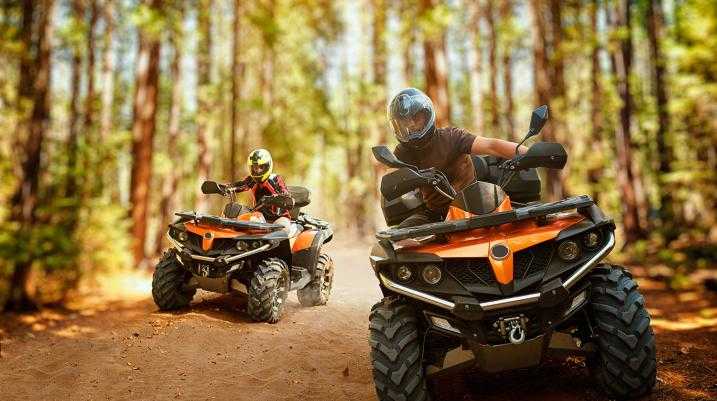Two Tragic Deaths Underscore Dangers of Riding ATVs

This past weekend, a 12-year-old in Kentucky and a 16-year-old in Tennessee died from injuries sustained while riding all-terrain vehicles (ATVs). On Saturday in Greenup County, Kentucky, a 12-year-old boy was riding an ATV when it hit a tree, launching him into the air and ultimately killing him. On Sunday in Lawrence County, Tennessee, a 16-year-old girl passed away after the ATV she was riding crashed.
These tragedies may sound like freak occurrences, but the truth is that between 500-600 Americans have been killed in ATV-related incidents each year since 2012. From 2003 to 2011, the death tolls were even higher, cracking 800 every year from 2005-2007. More than one in five of these deceased are children 16 or younger.
Though ATV-related deaths have declined, from 1982 to 2017 the Consumer Product Safety Commission (CPSC) tracked 15,250 such fatalities. At one point, five states accounted for 25% of the fatalities. That may no longer hold true, but the same five states still have the most ATV-related deaths:
- Texas (831)
- West Virginia (795)
- Pennsylvania (761)
- California (756)
- Kentucky (692)
Florida (616) and Tennessee (598) round out the top seven. Though fatalities have dropped compared to the mid-2000s, some argue that that has more to do with the emergence of off-road vehicles (ROVs) than actual safety improvements.
In 2015, the CPSC warned that “...riding an all-terrain vehicle (ATV) continues to be a dangerous and deadly activity when certain safety precautions are not followed. Deaths and injuries resulting from ATV incidents have ticked down in recent years, although the stats are still deeply concerning to CPSC. There are about 650 deaths and 100,000 injuries every year involving ATVs.”
According to the CPSC’s 2017 report, the following body parts are most likely to be treated in an emergency department after an ATV crash:
- Arm (29% of treated injuries)
- Head or neck (29%)
- Leg (21%)
- Torso (20%)
That second bullet point is perhaps the most concerning, especially considering that fractures comprise 27% of emergency-treated ATV injuries.
The ATV Safety Institute has issued these eight Golden Rules of ATV Safety:
- Always wear a helmet, goggles, boots, gloves, long sleeves, and long pants.
- Never ride on paved roads (ATVs are designed for trails).
- Never ride under the influence of drugs or alcohol.
- Never carry a passenger on a single-ride ATV.
- Ride an ATV that’s right for your age.
- Supervise riders younger than 18; ATVs are not toys.
- Ride only on designated trails and at a safe speed.
- Take a hands-on ATV RiderCourse and the free online e-course.
Dr. David Gilkey, a professor and Certified Safety Professional who has researched ATV safety, told Salon that many ATV riders ignore safety warnings. “You wouldn’t hand your keys to your car or your motorcycle to someone who’s never been on one and say ‘take it for a spin,’ but for some reason people don’t have that same sense for ATVs. So the tragedies just continue.”
Not to mention the fact that ATVs frequently are the subject of recalls for design or manufacturing flaws. As of this writing, there have already been eight ATV recalls this year — some involving seatbelts, steering control, and faulty brakes.
If you or a loved one has been seriously injured in an ATV crash, and you think the vehicle manufacturer was at fault, contact us for a free legal consultation.
Injured? Getting the compensation you deserve starts here.

Injured?
Not sure what to do next?
We'll guide you through everything you need to know.